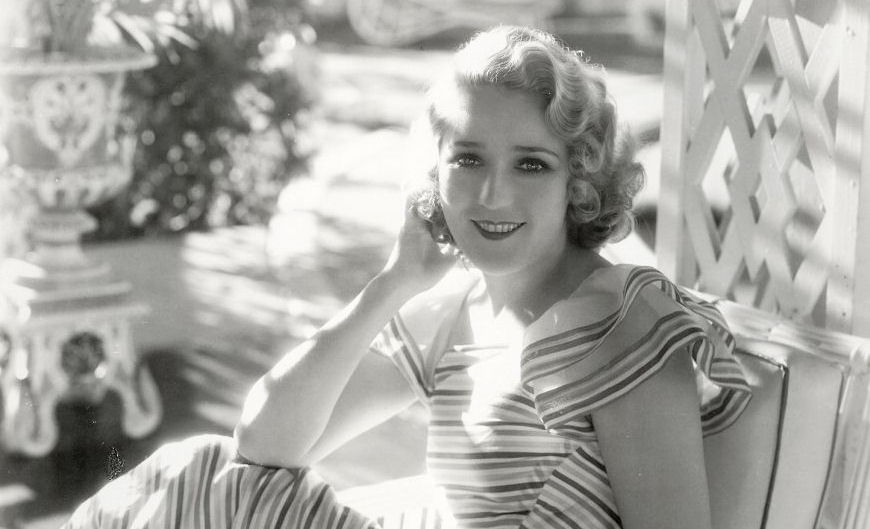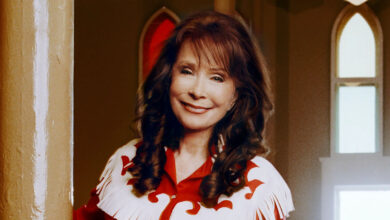
Podcast: Play in new window | Download
Subscribe: Spotify | Amazon Music | Youtube Music | RSS
“Adding sound to movies would be like putting lipstick on the Venus de Milo.” – Mary Pickford
The actress and movie producer known to everyone as Mary Pickford was born Gladys Louise Smith on 8 April 1892 in Toronto, Canada to parents John, who worked various jobs, including as a purser on board steamships and Charlotte who was a seamstress. She had a younger sister called Charlotte and a younger brother called John, both of whom also became actors. When Gladys wasn’t quite six years old, her father died as a result of a blood clot caused by an accident at work resulting in her mother taking in lodgers to help pay the bills. One of the lodgers was a theatrical stage manager called Mr Murphy, who suggested that the two girls, Gladys and her sister Charlotte could get parts on the stage. They did so, and their mother even played the organ while they performed.
By the turn of the century, the Smith family were fully involved with the theatre, travelling around the United States by train from one acting gig to the next, but always on the lookout for the big break. Sure enough, a break came their way when Gladys secured a supporting role in a Broadway play in 1907 called The Warrens of Virginia. The producer of the play, David Belasco insisted that she change her name and was given the stage name Mary Pickford.
On 19 April 1909, Mary Pickford screen-tested for D. W. Griffith who was a director for the Biograph Company, which was the first company in the United States devoted entirely to producing movies. She didn’t get the part she tested for, but Griffith was impressed and signed her up on $10 per day.
Pickford played all sorts of different parts with a plan of being in as many movies as possible with the aim of getting noticed so that she would be able to continue working and maybe get bigger roles. She played parts in 51 movies in 1909, and audiences started to look out for films which featured her even though Biograph didn’t credit its actors at the time. Audiences would look out for movies advertised as starring “The Biograph Girl” or “The Girl with the Golden Curls.”
Mary Pickford left Biograph in December 1910 to work for the Independent Moving Pictures Company (IMP) and whilst working there she married an actor called Owen Moore on 7 January 1911 but his alcoholism and insecurities about Mary’s fame didn’t make for a happy marriage.
Her time at IMP was not what she hoped, especially after it was acquired by Universal Pictures in 1912, so she returned to Biograph and D. W. Griffith. It was at this time that she gave some of her best performances including in Just Like a Woman, The Female of the Species and her last film for Biograph, The New York Hat towards the end of 1912. During this time, she also introduced Lillian and Dorothy Gish to Biograph who also went on to become major movie stars.
Although returning to Broadway at the end of 1912, she immediately realised that she missed working on movies and from 1913 she determined that she would only act in movies from that point forward joining Adolph Zukor and his Famous Players in Famous Plays company which went on to become Famous Players-Lasky and then Paramount Pictures.
Although Pickford’s first movie for the Famous Players was poorly written and one which she described as her worst feature ever, the movies that followed were strong, with parts in the likes of In the Bishop’s Carriage, Caprice and Hearts Adrift in 1914 turning her into a star. Hearts Adrift was so popular that it prompted Pickford to ask for a pay raise based on profits and it represented the first time that her name was seen on billboards and theatre marquees above the movie’s title. If Hearts Adrift was good, her next movie which was released only five weeks later, Tess of the Storm Country propelled Mary Pickford to superstardom. On 24 June 1916, she signed a new contract with Zukor which gave her full control over the movies she starred in and an unprecedented pay packet of $10,000 per week, in addition to half of the profits from her movies. Not only that, her contract also guaranteed that she would be paid at least $1,040,000 per year making her the first actress to ever sign a million-dollar contract.
During this period, the United States became involved in the First World War and so she joined with other famous names such as Charlie Chaplin and Douglas Fairbanks in promoting Liberty Bonds and at the end of the war she came up with the idea of the Motion Picture Relief Fund which was set up with some leftover money from her ward bonds efforts to help needy actors who had fallen on hard times.
When the contract with Zukor expired in August 1918, Pickford couldn’t get the terms that she wanted to renew and so left to join First National Pictures.
Shortly afterwards, in 1919, she joined forces with D. W. Griffith, Douglas Fairbanks and Charlie Chaplin to form United Artists which was set up to help actors have more of a say in the production and distribution of their movies.
Whilst touring the United States selling war bonds, Mary Pickford had begun a secret relationship with Douglas Fairbanks which ultimately led to her paying a settlement of $100,000 to Owen Moore. She was divorced from him on 2 March 1920 and married Fairbanks before the month was out on the 28th. They set up house together in a mansion called Pickfair in Beverly Hills and would often host events for visiting dignitaries and celebrities. Charlie Chaplin was a regular guest, but other visitors included Albert Einstein, Amelia Earhart, Sir Arthur Conan Doyle, H.G. Wells, Helen Keller and Lord Mountbatten.
Her movies at that time, including Pollyanna and Little Lord Fauntleroy had no trouble grossing over a million dollars at the box office, and the hits just kept coming including Rosita in 1923, Little Annie Rooney in 1925, Sparrows in 1926 and My Best Girl in 1927.
However, up until this point, all her movies had been silent ones. The end of the 1920s saw the introduction of the talkies and although she made the front pages of the newspapers after she cut off her curls, favouring a 1920’s bob and even winning an Academy Award for Best Actress for 1929’s Coquette, her first talkie, Mary Pickford massively underestimated how much of an impact sound would have and she didn’t take it seriously.
Pickford’s other problem was her age. She was in her late 30s and struggled to play the young feisty female parts which had made her famous and so in 1933, she retired from movie acting, with her last appearance being in 1933’s pre-code Western, Secrets which was a box office failure.
As her career as an actress started to fade along with that of Fairbanks, he grew restless and often travelled to Europe, which was something that Mary didn’t enjoy. When he began a romance with Sylvia, Lady Ashley, it became public knowledge and led to the split of the couple that had been known as Hollywood royalty in the early 1930s.
She didn’t retire from the industry though and not only did she continue to produce films for others, she also toured on the stage and appeared in a season of radio plays. In 1936, she became vice-president of United Artists and in the same year, she and Douglas Fairbanks were divorced.
Mary Pickford’s third and final husband was an actor called Buddy Rogers who she married on 24 June 1937 and the couple adopted two children, Roxanne, and Ronald. However, her relationship with her children was tense at best, which wasn’t helped by the decline of her career and the resulting descent into depression and alcoholism. She became a recluse, never venturing out of Pickfair unless it was absolutely necessary. Even when she was given an Academy Honorary Award in 1976, the film crew had to go to Pickfair to film a short message of thanks, which offered the public a rare glimpse of the once flamboyant starlet. As it turned out, it would be their last as three years later, on 29 May 1979 in Santa Monica, California, Mary Pickford died after suffering from a cerebral haemorrhage a week earlier. She was 87 years old.
Podcast: Play in new window | Download
Subscribe: Spotify | Amazon Music | Youtube Music | RSS




